Witches in Art, After the Trials
After the horrors of the European witch trials, witches took on new roles in art, and the possibilities were infinite.

A circle of witches gather with the Devil beneath a waxing moon.
Upon first glance, Francisco Goya’s Witches’ Sabbath (1798) may not appear too different from depictions of witches during the height of the trials. The women in this coven are elderly and haggard in appearance. One is holding a skeletal, malnourished child as an offering to the horned devil, and hanging from a spear are what appear to be spit-roasted infants. Gathered in one painting are a number of “witchy” stereotypes that convey suspicion and bigotry toward post-menopausal women: symbols of infertility, quite literally eating babies.
But the date of this painting should be your first clue that not all is what it seems.
Goya painted his Witches’ Sabbath at the very end of the 18th century. By now, witch trials in Europe were largely a thing of the past, and Goya wanted to keep it that way. This painting, as well as his later Sabbath painting, The Great He-Goat (1820-1823), are often interpreted by art historians as a liberal protest against encroaching royalists and clergy, who would succeed in taking back control of Spain after the Peninsular War. Goya’s exaggerated portrayal of witches, in this light, can be evaluated as a critique of superstition in favor of Enlightenment ideals.
As we explored in last month’s essay on Albrecht Dürer’s witch engravings, the European witch trials were mainly concentrated between 1550 and 1650. Dürer’s engravings (which predate that period) pull from classical imagery. However, once the trials escalated in earnest, the visual motifs of witchcraft adopted by witch hunters often fell in line with these earlier artworks.
After the Enlightenment, witch trials were regarded not as divine justice but uncivilized superstition. This shift in public attitudes gave artists a new opportunity: the witch could be painted as a symbol of protest, Gothic imagination, or feminine power.
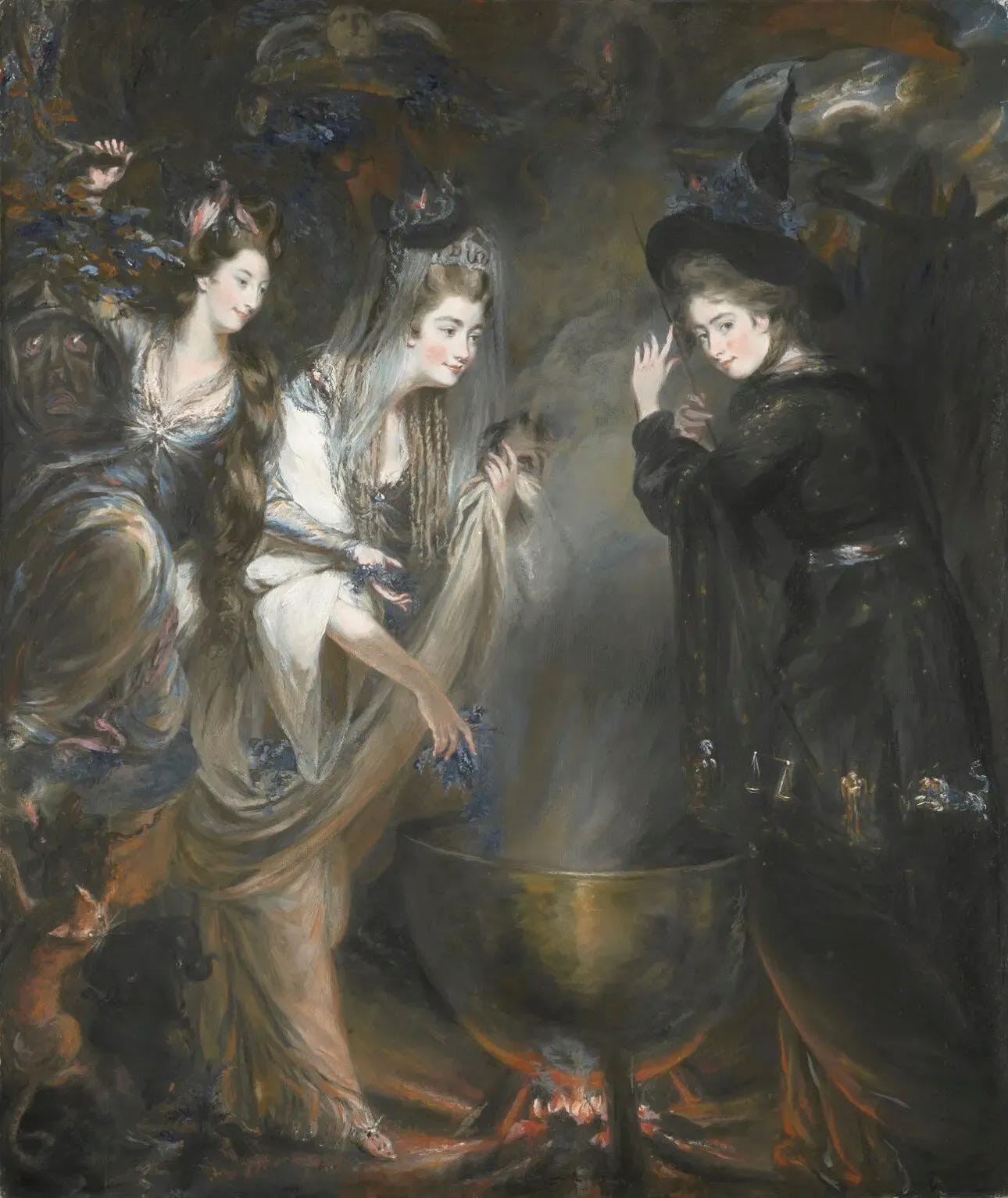
Take The Three Witches from Macbeth, painted by Daniel Gardner in 1775. Shakespeare’s witches are described in the play Macbeth as elderly, androgynous, and frightening oracles of doom. Gardner’s witches are beautiful women in fashionable attire. The ladies featured in this painting, from left to right, are Elizabeth Lamb, Viscountess Melbourne; Georgiana Cavendish, Duchess of Devonshire; and the sculptor and author Anne Seymour Damer.
All of these women were powerful and notorious in their own right—political operatives who used their influence in society to campaign for the Whig Party. Damer was a successful artist in a male-dominated field, and the subject of much gossip due to her relationship with the actress Elizabeth Farren. In this commissioned painting, the three friends acknowledge their mystique with a sly wink: as witches, the women are literally stirring the pot.
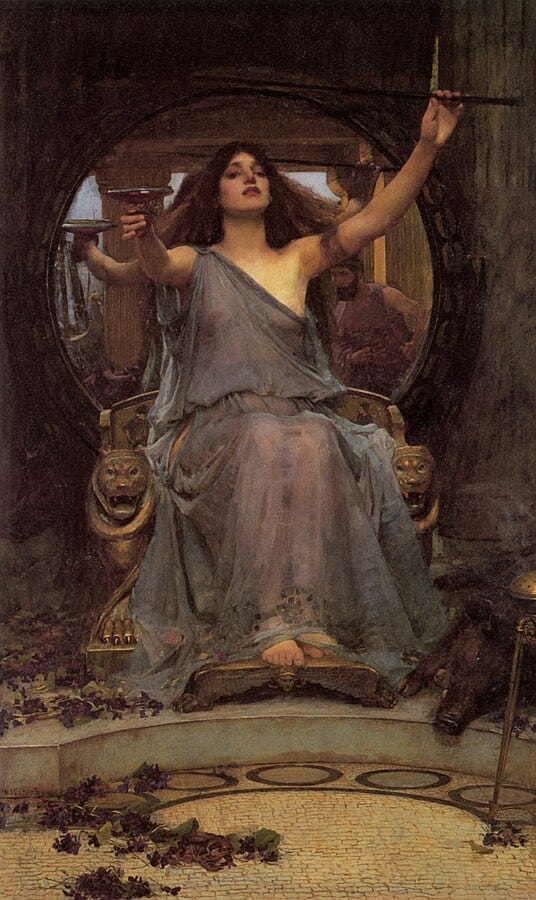
However, it is in the art of the Pre-Raphaelites that witches became true icons of glamour. As a refresher from my past series on Pre-Raphaelite art:
The Pre-Raphaelite Brotherhood was itself a short-lived association, lasting from 1848 to 1853. The Brotherhood was founded by seven British artists and writers (William Holman Hunt, John Everett Millais, Dante Gabriel Rossetti, William Michael Rossetti, James Collinson, Frederic George Stephens, and Thomas Woolner) who joined together in rebellion against the Royal Academy of Arts. They resented the Royal Academy’s commitment to the techniques of Renaissance master Raphael and the Mannerists who came after him. The Pre-Raphaelites wished to return to the styles that preceded Raphael (hence, Pre-Raphaelite), and found inspiration in medieval and early Renaissance artists.
Then, there is the broader Pre-Raphaelite movement, one that endured long after the original Brotherhood disbanded and some of its members, including Millais, began moving in different directions. The style they pioneered would influence artists for decades to come—among them are Edward Robert Hughes, Evelyn De Morgan, and John William Waterhouse. One can also find echoes of the Pre-Raphaelites in other movements, including the Glasgow Style and Art Nouveau.
Within the broader movement, which maintained a presence in British art through the end of the 19th century, witches were a subject of consistent inspiration. John William Waterhouse painted Medea and Circe, Frederick Sandys pulled from Arthurian legends for his Morgan le Fay, and Edward Burne-Jones painted another Arthurian witch in his The Beguiling of Merlin. In the Pre-Raphaelite tradition, witches were the femme-fatales of the mystical past, a rebuttal of the Victorian “angel of the house.”
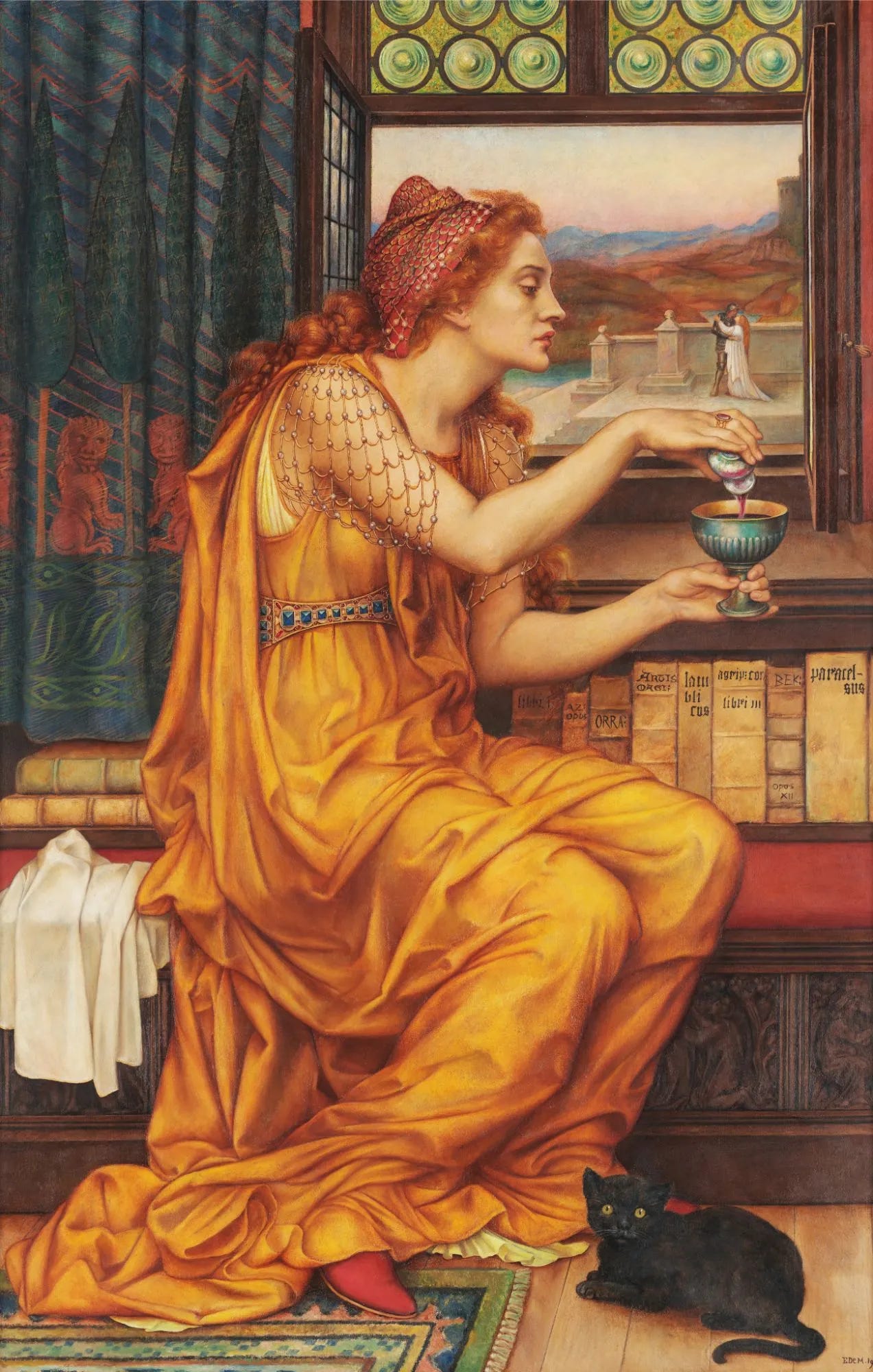
But in the works of Evelyn De Morgan, a female Pre-Raphaelite painter, witches took on a more complex nature. De Morgan used mythological symbols and allegories to convey her Spiritualist, pacifist, and feminist beliefs through her work; her female figures are usually painted in the midst of action. This is certainly true for her witches—whether casting a spell or stirring a potion, the witches in her oeuvre are the movers-and-shakers of their narratives.
What stands out to me about her witches is their psychological depth. They are more than the villainous “hags” of the witch trial era, and more than the sexy temptresses featured in other Pre-Raphaelite paintings. For example, in The Love Potion (1903), the witch is brewing an elixir to steal another woman’s man: we can see the couple embracing each other outside the window. The witch is in the wrong, but rather than portraying her as the typical evil enchantress, De Morgan brings out the emotional exhaustion in the witch’s face, the sadness in her eyes. It’s as if the woman knows she is making a mistake, but she’s proceeding nonetheless.

By the 20th century, mythological scenes largely took a back seat in fine art, but witches and occult symbolism did find a home in Surrealist works. In particular, female artists Leonora Carrington, Kati Horna, and Remedios Varo were dubbed the “Three Witches of Surrealism” for their frequent use of occult imagery. Varo’s Witch going to the Sabbath (1957) is a hybrid entity: part woman, part bird. The tail feathers of the witch’s familiar turn into a winding road that disappears inside her torso, suggesting the infinite possibilities of the inner world.
Upon first glance, Varo’s figure may not look as traditionally “witchy” as the other paintings we’ve examined. But wrapped in a feathered cloak, stepping out with her crystal and pointed boots, this witch is the one most poised to take flight.
Recently on Fireside Fables: The Girls Who Talked to Ghosts
In 1848, the sisters Maggie and Kate Fox stunned their small community in Upstate New York with their ability to communicate with ghosts. The Fox Sisters were “ground zero” for Spiritualism: a 19th-century movement that captivated millions of Americans and Brits with the promise of speaking to the dead. This is a story of Victorian psychics and mediums, rapacious fraudsters, and the people who longed to believe.



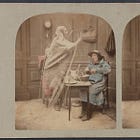
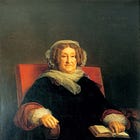
Interesting to examine the arc of popular culture depictions of witches against this fine art backdrop with His dark materials being the ultimate pro-witch expression
I enjoyed this piece, Nicole! I’ve been pondering on the historical journey of witches—from burn-to-binge worthy.
https://legendaryheaux.substack.com/p/heauxcus-pocus-why-we-burn?r=4houn&utm_campaign=post&utm_medium=web&showWelcomeOnShare=false